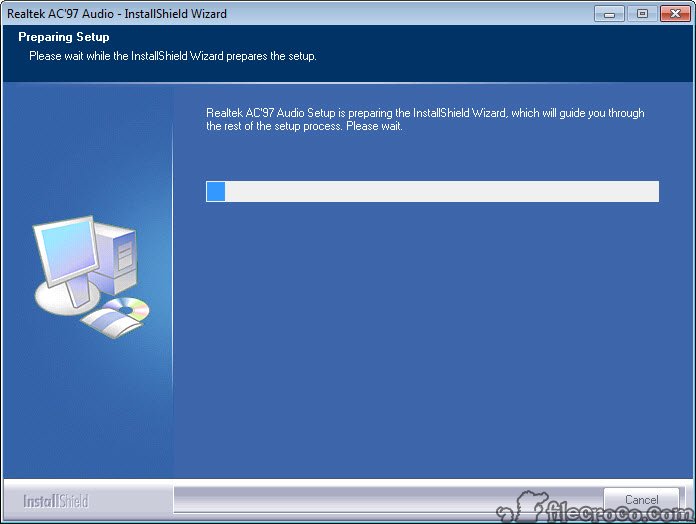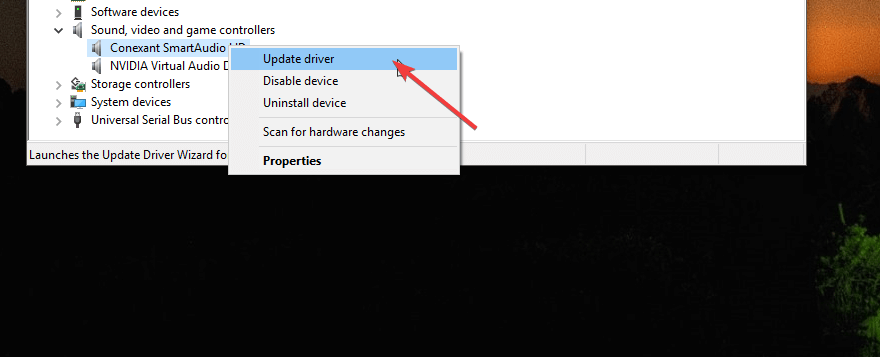The known issue impacting computers with Conexant ISST audio drivers has been under investigation since May 2020 when the first version of Windows 10, version 2004 was released. Conexant Audio Driver for Windows 10 (64-bit) - Notebook.

Conexant Driver Installation Failed
Conexant has a long history of technological innovation in audio technology, which provides superior high definition audio quality and premium performance. Today, Conexant offers a line of industry leading HD-Audio codecs, including marketing value-added Voice Processing Algorithms Digital Signal Processor (DSP) software, optimized for PC Motherboard integration for worldwide operation.
The Conexant SmartAMC HD2 is a stereo audio codec optimized for HDA implementation of Audio on Motherboard (AOM). The SmartAMC HD2 device set is compliant with Intel’s High Definition Audio (HDA) Specification (Revision 1.0). The audio supports 2-channel analog output, 5.1-channel digital SPDIF output, stereo microphone inputs, and audio jack retasking. The audio also supports audio formats ranging from CD quality (16-bit, 44.1 kHz) to DVD-Audio (24 bit, 192 kHz).

Features:
* Compliant with Intel HDA Rev.1.0
* 24-bit stereo DAC and ADC
* Supports Power Management: ACPI Power Management Registers; APM support
* Thin package supports low profile designs
* Supports Windows 2000/XP operating system on a MMX 300 MHz-based computer with 64 MB RAM, or equivalent
* Enhanced in-silicon Pulse Dialing and Wake-on-Ring circuitry for enhanced performance
* Innovative in-silicon and driver-based capability to manage SpeedStep and PowerNow CPU events
* Data modem with receive rates up to 56k bps and send rates up to 48 kbps (V.92 mode) or up to V.34 rates (V.90 mode)
* Data compression and error correction
* Fax modem with send and receive rates up to 14.4 kbps
Cons
- Not a freeware
Microsoft has shared a workaround for a known issue impacting Windows 10 devices with Conexant ISST audio drivers and causing update errors and issues.
The known issue impacting computers with Conexant ISST audio drivers has been under investigation since May 2020 when the first version of Windows 10, version 2004 was released.
Computers with affected Conexant ISST audio drivers will not be able to install newer Windows 10 versions until the associated compatibility holds will be removed.
Windows 10 computers affected by this known issue come with Conexant ISST Audio or Conexant HDAudio drivers under 'Sound, video and game controllers' in Device Manager.
Impacted devices include both client (Windows 10 2004 and 20H2) and server (Windows Server 2004 and 20H2) platforms.
The problematic drivers have sequentially numbered filenames from uci64a96.dll through uci64a231.dll and a file version of 7.231.3.0 or lower.
Some devices allowed to bypass the safeguard
'To mitigate the safeguard, you might need to check with your device manufacturer (OEM) to see if an updated driver is available and install it,' Microsoft explained on the Windows 10 Health Dashboard.
If users try to update even though no updated drivers are available, they might be able to roll back to the previous Windows 10 version and are advised to try and update to Windows 10, versions 2004 or 20H2 again.
Conexant Driver Download
'As of January 14, 2021, we are adjusting this safeguard to allow certain devices with the affected driver to update to Windows 10, version 2004 or Windows 10, version 20H2,' Microsoft added.
However, Redmond recommends not to manually update using the Media Creation Tool or the Update Now button until the known issue is fully resolved.
Microsoft and Synaptics are working on resolving these issues and will provide a fix in an upcoming Windows 10 release.
Conexant Driver Linux
Last month, Microsoft has also partially addressed separate known issues impacting Windows 10 devices with Conexant or Synaptics audio devices and causing BSOD crashes.
Conexant Driver Rd01-d850
Even though Microsoft does not recommend circumventing update blocks, you can still do it using the Media Creation Tool or with the help of a Windows 10 group policy specifically designed to enable users to bypass update blocks.
To work around Windows 10 update installation problems and errors, users can use this update problem troubleshooter or this guided walk-through.
Related Articles:
